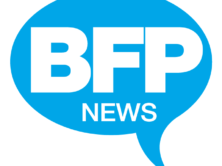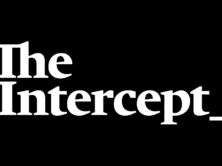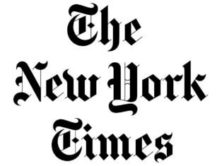Matt J. Duffy studied anonymous sourcing at the NYTimes and the Washington Post.
Are newspapers really using fewer anonymous sources?
A recently released study looked into anonymous source use at The New York Times and the Washington Post and concluded that those two newspapers are sourcing material to unknown people less now than in the 1960s and 1970s. The study (see here) was by Matt J. Duffy, a professor at Abu Dhabi’s Zayed University and co-authored by Georgia State University’s Ann E. Williams.
Duffy explained to iMediaEthics by phone that his study’s results didn’t match his expectations going into the study. He said his “hunch was that we were using [anonymous sources] more today than they used to use it in the past.”
The Atlantic Wire highlighted “a few caveats to the study.” For example, the study focused only on one front-page from one edition from each year of the past decades for those two newspapers. As explained in the methodology, the study focused on two days each from two weeks from 1958, 1968, 1978, 1988, 1998, and 2008.
Duffy on Anonymous Sources
StinkyJournalism spoke with Duffy by phone about his study. He told us anonymous sourcing interested him because “like many journalism observers, anonymous sourcing has been a big pet peeve of mine for many years.”
He added that he thinks anonymous sources are “overused” not just because readers aren’t aware of who is saying what, but also because sometimes, those anonymously-sourced reports end up as wrong.
As example, Duffy pointed to Newsweek’s 2005 report claiming Guantanemo Bay soldiers and guards had “flushed a Koran down the toilet.” The story, which relied on anonymous sourcing, had to be retracted after the source “recanted,” Duffy explained, but not before it “led to riots and deaths.”
“There are times where I do think anonymous sourcing should be used, but I think it should be rare and limited and with great caution,” Duffy explained.
The most clear-cut example of a reasonable use of anonymous sourcing is the case of the whistle blower, Duffy said to StinkyJournalism. “Someone who is trying to correct some injustice and doing so through this means of talking to a journalist behind this veil of anonymity because there could be repercussions against this person or people for what they’re saying — that to me is the standard we should set,” he commented.
However, he added, “On a day-to-day basis, it is rarely used in that fit of a definition.”
Duffy’s Suggestions for Responsible Anonymous Source Use
When anonymous sources are used, Duffy calls for journalists to use “as much transparency as possible, as much identification of the source and what their motives might be” and “a thoughtful explanation for why the journalist is granting anonymity,” he told StinkyJournalism.
Duffy commented that “it’s a big deal” to grant anonymity. “Some say oh we can’t” go into too much detail for why the anonymity was granted, “because it will be jarring to the reader to see all the explanation.”
“But yes, we should jar the reader” because the information “is being conveyed in a very unorthodox manner,” Duffy explained to iMediaEthics.
He added that he also “strongly” calls for the information to be “independently verified” and not reliant on anonymous sources to “make sure we’re not being misled…manipulated.”
He suggested,but noted he doesn’t have a data to support his hypothesis, that perhaps the media is using fewer anonymous sources currently because of the criticism and complaints over anonymous sourcing ” in the early 2000s because of the run-up to the Iraq war.”
Perhaps “editors of the newspapers and other outlets really took that criticism seriously,” Duffy commented.
The Atlantic Wire noted that Duffy is “calling for the Society of Professional Journalists to change their code of ethics to limit the use of anonymous sources more,” he wrote in an email. “So, perhaps this will have some real-world impact — a rarity for an academic.”
In response to his study, Duffy noted that he hasn’t seen disagreement, or people saying that “anonymous sourcing is being used just right or should be used more.”
While he doesn’t expect an “immediate impact” from his research, he told StinkyJournalism by phone that he is hopeful that his study prompts a discussion of values and standards
In his report, Duffy called for journalists to “decrease the number of reports based on a single, unverified source.”
Other Findings from Duffy’s Report
Also according to the study, journalists are now providing more information about their anonymous sources. However, as Duffy explained in a slideshow presentation about the report, that could mean stating “‘a senior Pentagon official’ instead of ‘a Washington source.'”
We asked Duffy about his coding: For example, was “government source” considered an anonymous source with a sufficient level of description? He explained: “Government source was not specific enough. If they went with a certain department or agency within the government, then that is some level of identification.”
And, as the report explained, that information is derived from the study’s finding that “Up until 2008, reporters offered explanations or justifications for anonymity in fewer than 10 percent of the cases. In 2008, the percentage had jumped to more than 25 percent.”






Comments Terms and Conditions